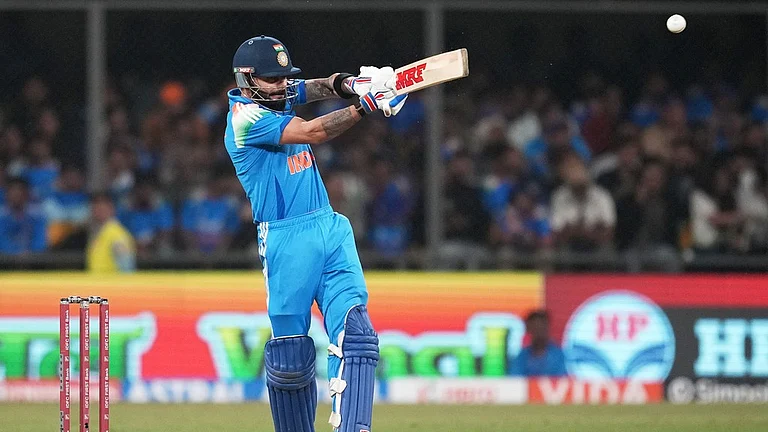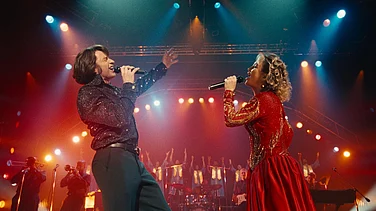At the end of every party, some friend or the other will ask me to tell the story of “Inspector Khan”. Though I have narrated it at almost every party since I first heard the story in 2013, there will always be someone hearing it for the first time. It has now become a ritual of sorts. The lights are dimmed and a circle of eager listeners forms around me. I begin with the familiar words: “This is a true story…” The narrative follows the familiar contours to reach the jump-cut climax, eliciting a cry of shock from the new listeners. “It always scared me,” said an economist and colleague, who has heard “Inspector Khan” several times, after I narrated it at a dinner last Saturday. “It still does.” Her husband, also an economist, said: “It never scared me, but I find it thrilling. It is also very enjoyable to watch the reaction of those hearing it for the first time.”
This time, the first-time listener was a young friend who teaches English at the same university on the outskirts of Delhi, where I teach journalism. “I find it difficult to sleep after listening to a ghost story,” she said. “This is because I live alone. Though I enjoy the thrill, I need someone to assure me that it is all fiction.” The conversation turned to horror films. “I like Japanese horror films,” said a media studies scholar. “Ju-On (1998), Ringu (1998).” Since the beginning of this century, Japan—and South Korea—have consistently produced horror films that have also inspired Hollywood remakes.
ALSO READ: Horror As The Theme Of Our Lives
Someone at the party mentioned Tumbbad (2018), set in pre-Independence India and follows the fortune of one family who has access to the womb of the Goddess of Prosperity through a well in their ancestral home. The womb is also the hideout of the goddess’s eldest child and the demon-god Hastar. According to legend, at the beginning of creation, Hastar had grasped all the gold in the world, but when he tried to also grasp all the food, the other gods attacked him. He was saved by his mother who hid him in her womb on the condition that no one will worship him. But the residents of Tumbbad, a village in Maharashtra, build a temple to him because they can enter the womb of the goddess, lure Hastar with food, and steal his gold. “I found it quite feminist,” said my economist friend. “The womb is, after all, the scariest place. The site of desire and fear.”

Psychoanalysts and feminists have explored the idea of the womb as uncanny. In his essay The Uncanny (1919), Sigmund Freud tries to understand the meaning of the German words heimlich and unheimlich, which translate into “homely” and “uncanny”, respectively, in English. He concludes: “[H]eimlich is a word the meaning of which develops towards an ambivalence, until it finally coincides with its opposite, unheimlich. Unheimlich is in some way or other a sub-species of heimlich.” In other words, the uncanny is nestled in that which is familiar. And what could be more familiar than the womb itself, from which we all emerge? For Freud, a vivid example of the uncanny for some people is the fear of being buried alive. He, however, claims that the source of this fear is actually the desire for the pleasure of intrauterine existence. What seems “uncanny” is actually pleasurable, and the tomb is transformed into the womb—like it is for Hastar, buried alive in the womb of his mother.
Directed by Rahi Anil Barve and Anand Gandhi, Tumbbad is a rare example of a successful horror film from Bollywood. Film scholars Colin Odell and Michelle Le Blanc, in their book Horror Films (2007), claim that horror films were a popular genre in India but only a small part of the country’s massive annual film output. One of the earliest examples of a successful horror film from the Hindi film industry was Mahal (1949). The film is important for many reasons, as film scholar Rachel Dwyer writes in her essay Bombay Gothic: On the 60th Anniversary of Kamal Amrohi’s Mahal: “[T]he take-off point for the careers of Madhubala, aged 16, and Lata Mangeshkar, aged 20; its great songs (though Khemchand Prakash was not to continue his music); as a key film in the career of its male star, Ashok Kumar, and its writer and director, Kamal Amrohi; as well as being one of the last films of the great Bombay Talkies studio.”

The film did nothing to consolidate the horror genre in the Hindi film industry despite its success. From the 1970s to the 1990s, the genre was the monopoly of the Ramsay brothers who became almost synonymous with low-budget horror films in Hindi. The seven sons of radio manufacturer and producer, F. U. Ramsay—Kumar, Gangu, Tulsi, Arjun, Shyam, Keshu, and Kiran—were a unique example of collaborative filmmaking, with each brother specialising in one or two departments of the trade. They made about 30 films, tasting success with Purana Mandir (1984), which was the second-highest-grossing film of the year.
In the years after the Ramsay brothers, few good or successful horror films have emerged from Bollywood. Ram Gopal Varma-directed Raat (1992) and Bhoot (2004) are exceptions that confirm the rule. Bhool Bhulaiyaa (2007), directed by Priyadarshan, inaugurated the horror-comedy genre, which would find further success in Go Goa Gone (2013) and Stree (2018). But success—commercial or critical—for horror films has been rare. For every Stree and Tumbbad, there are other unsuccessful ones—Phillauri (2017), Pari (2017), Roohi (2021), or Bhool Bhulaiyaa 2 (2022). With the rise of streaming platforms, there were some interesting experiments such as Bubbul (2020), which drew on Bengali folklore to create a brooding atmosphere. Others such as Netflix’s Ghost Stories (2020)—a four-part anthology directed by some of India’s best film directors—failed miserably.

Perhaps one exception to this march of disappointments was the 2018 Netflix original series Ghoul. Written and directed by Patrick Graham, the three-part series is set in a futuristic India, torn apart by sectarian violence. Film critic Tanul Thakur described it as “a terrifying picture of Hindu rashtra”. Its central character, Nida (Radhika Apte), is a member of an anti-terror squad and a patriotic Muslim, who shows no sympathy for other Muslims—real or suspected “anti-nationals”. She doesn’t even hesitate to hand over her father (S.M. Zaheer) to the state’s forces because she suspects him of being anti-national.
Much of the action of the film takes place at Meghdoot 31, a detention centre for subversive people. It is commanded by Colonel Sunil
Dacunha (Manav Kaul), who takes great pride in being a descendent of the Dacunhas of Goa, famed interrogators of the Goanese Inquisition. In an early scene, he shows Nida a cupboard in his office which is stocked with confession tapes. “Intellectuals, opposition, religious fanatics,” he tells Nida. “Showing kindness to these people... it’s a sign of weakness.” The setting of the film is very important. Meghdoot 31 is created to be claustrophobic and disorienting. Its blackened windows prevent anyone from looking in and mess with the prisoners’ sense of time. It also plays havoc with the body clock of the soldiers.
Claustrophobia is essential to the horror of the film. Describing the set design of his horror masterpiece, The Shining (1980), Stanley Kubrick told Michel Ciment how the setting of his film—in a snowbound hotel—was essential to the horror. The characters’ inability to escape reflects the inability of the audience to escape from their seats. In Ghoul, Meghdoot 31 is a microcosm of the totalitarian society outside its concrete walls and barbed wires. In such a society, one can only be a torturer or the tortured, the interrogator or the subject of interrogation.
ALSO READ: The Ghost As A Metaphor In Bengali Cinema
The film is also a lost moment for Bollywood. It was made at a time when the government had not yet censored streaming platforms, as it would a few years later with its OTT rules. These rules—and the public outrage—will ensure that shows critical of the government, such as Sacred Games (2018, 2019), Paatal Lok (2020), and Tandav (2021), are not made anymore.
There are other horrors now. Who needs ghost stories?
(Views expressed are personal)
ALSO READ
Uttaran Das Gupta teaches journalism at O.P. Jindal Global University, Sonipat. His novel Ritual was published in 2020
























